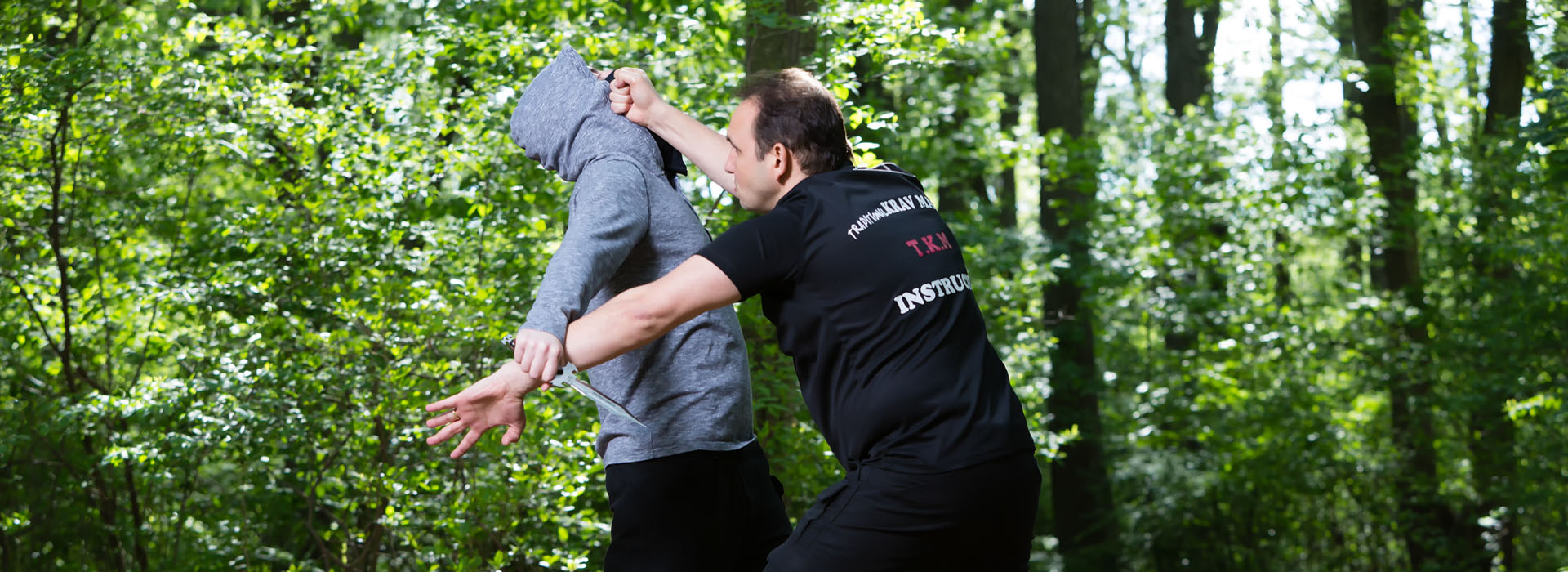Krav Maga has developed a unique method for maximizing the use of readily available everyday objects for self-defense and other combat purposes.
The use of different objects to achieve desirable outcomes is an important element of human development in various areas of life, and this should include
self-defense. At any given moment, our immediate surroundings are abundant with different objects which can be employed in a combat situation - sand, clods,
rocks, sticks, chairs, and more. Wise use of such objects can more often than not decide the outcome of a violent conflict.
This article describes how to turn a pen, bag, keys and other everyday objects that are available to anyone, into tools that can be used for self-defense purposes.
Many say that the origins of the use of available objects for the purpose of self-defense, which helped form the Krav Maga method, stemmed from the ‘Nabootim’ (large thick sticks) battles that took place between the Jewish settlers in Israel and their Arab neighbors. Such fights were very common and were deliberately ignored by the foreign authorities in the land of Israel. After the establishment of the State Of Israel and the IDF, further understandings were obtained from the battlefield where face to face battles took place with the Arab armies when IDF soldiers were armed with a Bayonet and limited ammunition. When ammunition ran out, the shootout turned into a face to face battle, with the Bayonet used as a ‘cold’ weapon for defense purposes and counter attacking the enemy. The ‘Nabootim’ and Bayonet fighting techniques serve as the inspiration for the development of using available objects in Traditional Krav Maga.
Today, the use of available objects in Krav Maga is divided into two main parts:
- Immovable Objects - The use of immovable objects, or ones that cannot be easily moved, like a door, a heavy table and more. These articles are generally used as cover or to create a buffer against an attack or to assist with counter-attack or improving one’s position.
- Building Power objects /power enhancers – the use of easily movable objects. These items usually extend the limb using them, and because of their physical properties are able to absorb the force of a blow and create much damage when attacking with them. Sometimes they can be used for diversion and deterrence.
- Some of these objects are “weapon-like objects” and can be divided into five subgroups:
- Shield-shaped objects - a chair, a bag, and small furniture. These objects, as their name suggests, are used mainly for protection although can also be used for general counter attacks in most cases.
- Baton-like objects - an umbrella, a rolled newspaper, a flashlight and more. Mostly used for attack and defense.
- Chain-like objects (objects that bypass defense and are mostly used for attack) – a rope, a bag with a strap and more. Throwing objects - sand, rocks, coins and more. These objects are used mainly to create distraction and deterrence.
- Knife-like objects - a broken bottle, a sharp branch, rust stick, keys and more. These objects are meant primarily to cut and stab - we teach the use of these objects only for diversion creation.
*** Of course, some items would fall into several categories simultaneously.
The use of abundant everyday objects as tools for self-defense has a few basic rules:
1. Almost any object can be used for self-defense.
2. The object should be used wisely in accordance with your intentions, and take into consideration its physical characteristics. The object ought to be stronger than your opponent's body part you wish to harm.
3. Use the object as if you were using your hands and legs – view it a natural extension of your body.
4. Do not dwell on overusing the ‘weapon’ and do not hesitate to throw it away to improve your position.
5. Use your entire body, not just the ‘weapon’ you are using.
6. The attacks using the ‘weapon’ should be short and purposeful to not "communicate” to your opponent of your intentions.
It is important to remember that the Traditional Krav Maga method incorporates other principles nurtured by the Krav Maga founder Imi Lichtenfeld (Sde’-Or) and his successor the late Eli Avikzar, including the basic principle of "use your knowledge as needed" - you need to reach expertise, so that you don’t have to kill.
Always strive to have exceptional self-control and consideration to others, even when facing a violent conflict. All efforts must be made to prevent the instinct to kill, yet the biblical expression of “He who rises to kill you, rise early and kill him first” still applies in cases where it’s either "you or your opponent."
*** The use of cold weapons for fighting is inconsistent with the laws of the State of Israel and therefore unintended use against another person should be avoided.
“Use your knowledge but use it right” - Imi Lichtenfeld (Sde’-Or).
This article was written by Ron Rotem – TKM Traditional Krav Maga and self-defense trainer of Even Yehuda and Kiryat Hasharon.
Ron’s Original Article in Hebrew was translated to English by Guy Rinat – TKM Traditional Krav Maga New York Student.

